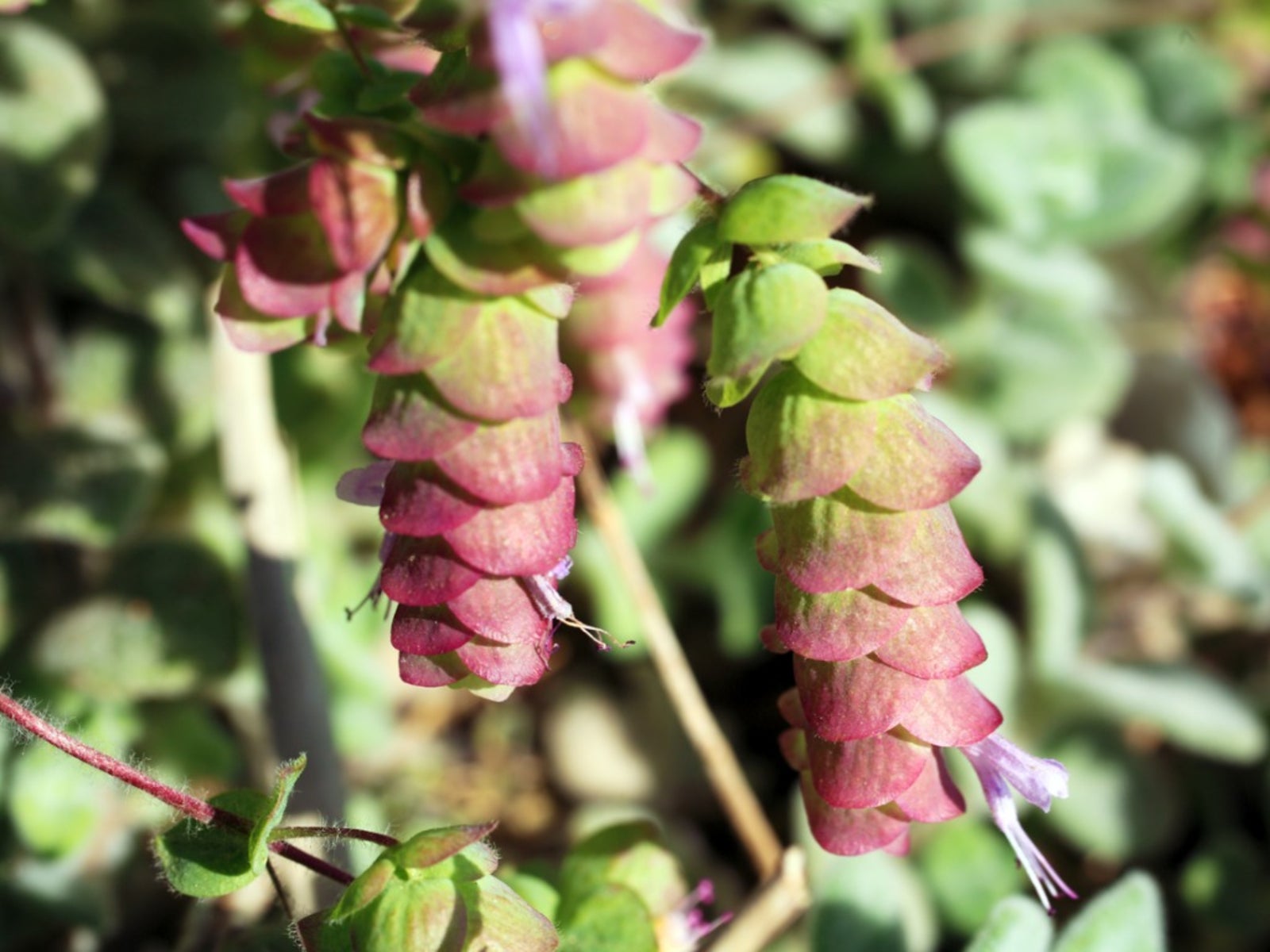
Herbs have been cultivated for centuries for both culinary and medicinal uses. Most of us are familiar with parsley, sage, rosemary and thyme, but what is dittany of Crete? Read on to learn more.
What is Dittany of Crete?
Dittany of Crete (Origanum dictamnus) is also referred to as Eronda, Diktamo, Cretan dittany, hop marjoram, wintersweet, and wild marjoram. Growing dittany of Crete is an herbaceous perennial that grows wild on the rocky faces and gorges that make up the island of Crete - a multi-branched, 6 to 12 inch (15-30 cm.) herb with round, soft fuzzy grey leaves emanating from slender arching stems. The white, down-covered leaves highlight the 6- to 8-inch (15-46 cm.), pale pinkish purple flower stalks, which bloom during the summer. The flowers are attractive to hummingbirds and make lovely dried flower arrangements. Dittany of Crete has played an important part in Greek Mythology, as a medicinal herb through medieval times, and as a perfume and flavoring for drinks such as vermouth, absinthe and Benedictine liqueur. Flowers are dried and brewed into an herbal tea for all sorts of ailments. It also adds a unique nuance to foods and is often combined with parsley, thyme, garlic and salt and pepper. The herb is lesser known in North America, but still cultivated in Embaros and other areas south of Heraklion, Crete.
History of Dittany of Crete Plant
Historically ancient, dittany of Crete plants have been around since Minoan times and utilized for everything from a cosmetic hair and skin treatment to a medicinal salve or tea for digestive problems, healing of wounds, easing childbirth and rheumatism and even to cure snake bites. Charlemagne lists it in his medieval itemization of herbs, and Hippocrates recommended it for a plethora of disorders of the body. Dittany of Crete plants symbolize love and are said to be an aphrodisiac and have long been given by young men to their lovers as a representation of their deep desire. Harvesting dittany of Crete is a risky endeavor, as the plant favors precarious rocky environs. One of the many names given to dittany of Crete is Eronda, meaning “love” and the young lovers searching for the herb are called ‘Erondades' or love seekers. Goats wounded by an arrow were said to seek wild growing dittany of Crete. According to Aristotle, in his treatise “The History of Animals,” the ingestion of dittany of Crete herbs would expel the arrow from the goat -- and logically from a soldier as well. Dittany of Crete herbs are also mentioned in Virgil's “Aeneid,” in which Venus heals Aeneas with a stalk of the herb. In Greek mythology, it was said that Zeus gave the herb to Crete as a thank you gift and was used by Aphrodite. Artemis was often crowned with a wreath of dittany of Crete and the herb's name is said to have been derived from the Minoan goddess Diktynna. To this day, wild dittany of Crete herbs are prized and protected by European law.
How to Grow Dittany and Cretan Dittany Care
Dittany of Crete can be grown in USDA growing zones 7 to 11 in full sun exposure. The plant can be propagated by seed in the early spring or by division in spring or fall. Seed germination takes about two weeks in a greenhouse. Plant the herb outside in early summer in containers such as hanging baskets, rockeries, or even as a green roof. You may also take basal cuttings in summer when the shoots are 8 inches (20 cm.) above ground. Pot them into individual containers and place them in a cold frame or greenhouse until the root system has matured, then plant them outside. Dittany of Crete is not particular about its soil but does prefer dry, warm, well-drained soil that is slightly alkaline. Once the herb has established itself, it will need very little water.
Sign up for the Gardening Know How newsletter today and receive a free copy of our e-book "How to Grow Delicious Tomatoes".

Amy Grant has been gardening for 30 years and writing for 15. A professional chef and caterer, Amy's area of expertise is culinary gardening.
